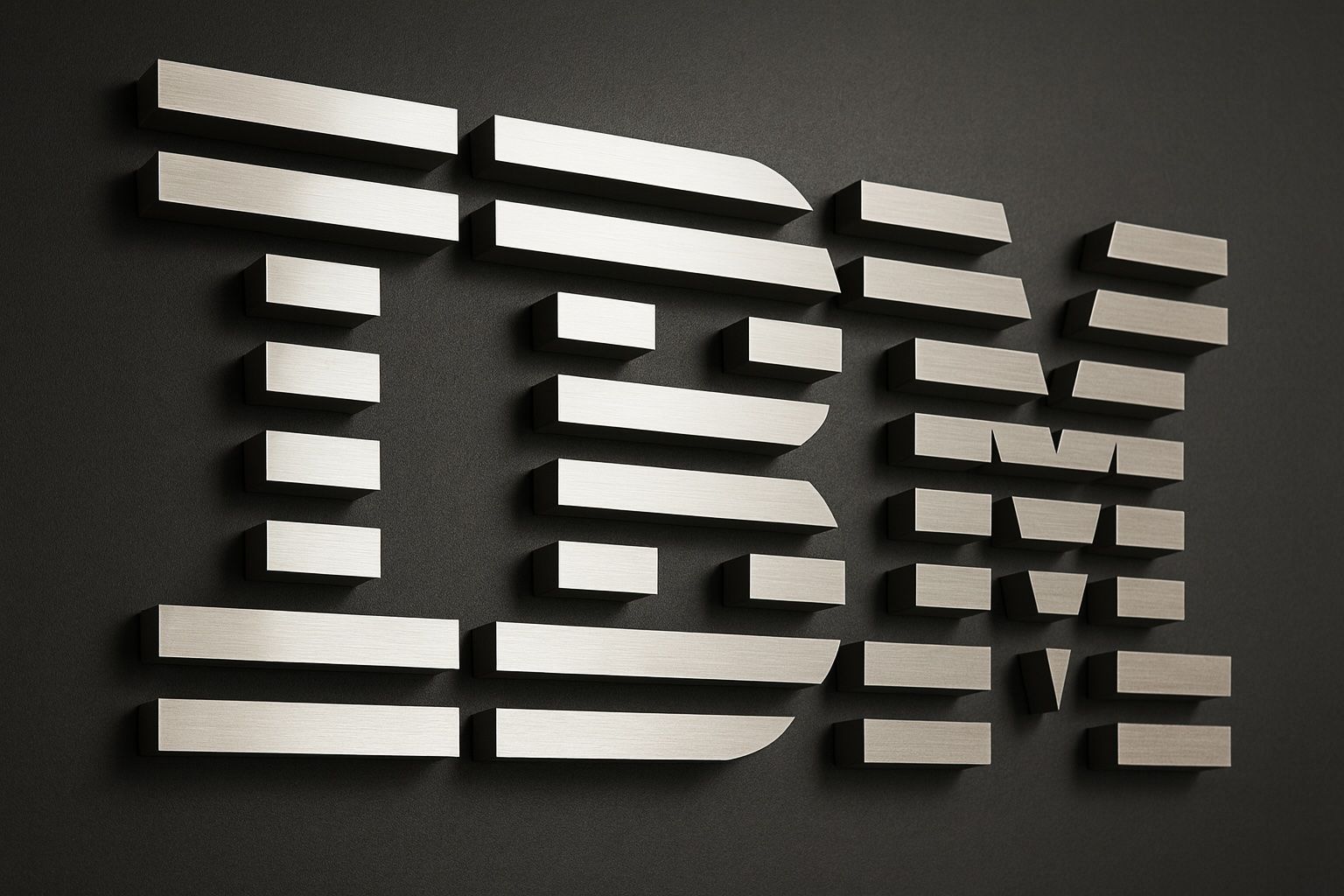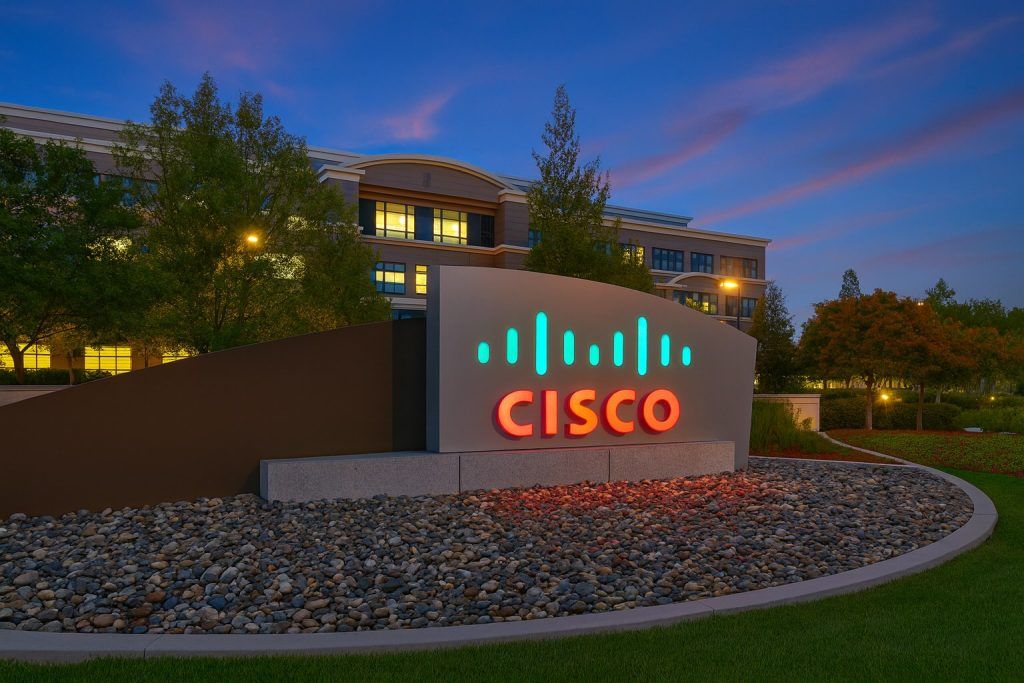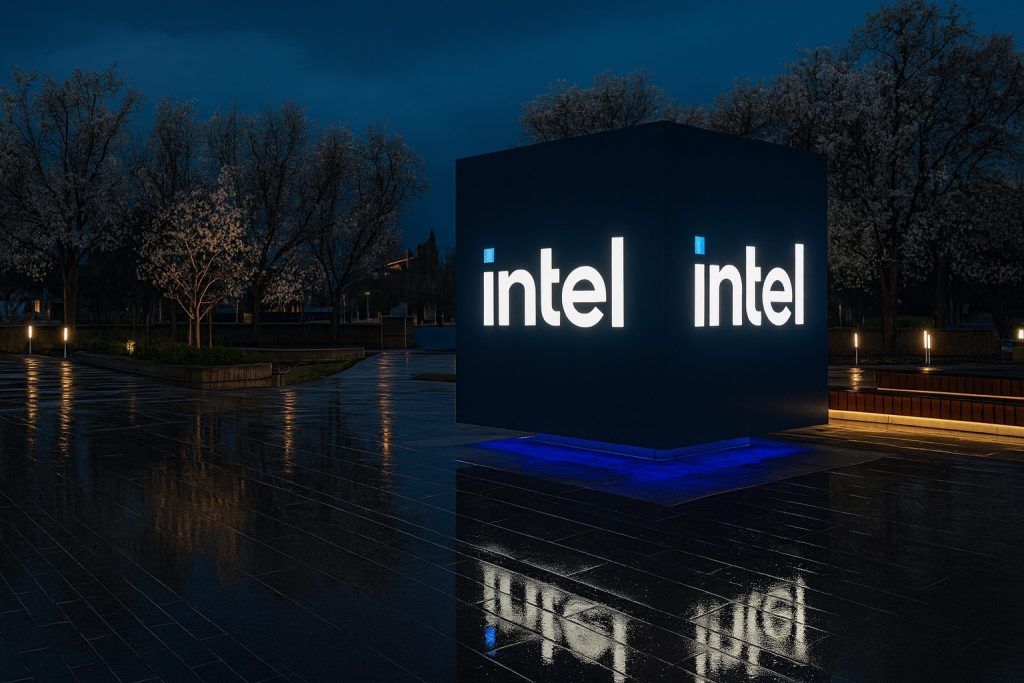- Surging Share Price: IBM’s stock is trading in the high-$270s as of mid-October 2025 – just shy of its 52-week high around $296 [1]. The price has climbed roughly 28% year-to-date, far outpacing the S&P 500’s ~13% gain [2]. (IBM even notched all-time highs above $300 earlier in 2025 [3].) Shares did pull back ~1.7% on Oct. 16 to about $276 [4], but overall “Big Blue” is near its highest level in years.
- AI & Quantum Fueling the Rally: Investors are bullish on IBM’s transformation into an AI and cloud powerhouse. In recent weeks, IBM announced a major AI supercomputing partnership with AMD (Oct. 1) to host one of the largest AI training clusters for a startup [5], launched Granite 4.0 (Oct. 2), a new suite of enterprise AI models, and struck a partnership with Anthropic (Oct. 7) to integrate the Claude AI assistant into IBM’s software [6] [7]. These moves – along with a quantum computing breakthrough that helped HSBC optimize bond portfolios [8] – have stoked excitement. IBM’s renewed focus on cutting-edge tech has shifted its image from a legacy “old tech” firm to a company with a credible growth story, driving a dramatic re-rating of its stock [9] [10].
- Strong Financials & Earnings Momentum:IBM’s financial results have improved, reinforcing the stock’s rise. Last quarter (Q2 2025), IBM beat expectations with revenue of $16.98 billion (vs. ~$16.6 B expected) and earnings of $2.80 per share (vs. $2.65 forecast) [11]. That ~7.7% revenue growth was a notable uptick for a company that struggled with flat sales for years [12]. The company even raised its full-year profit and cash-flow outlook, signaling confidence [13]. Q3 2025 earnings are due on Oct. 22, and Wall Street is looking for continued growth – the consensus forecast is about $16.1 B in revenue and $2.43 EPS [14]. IBM has a streak of beating estimates (averaging 6% above forecasts in recent quarters) [15], so this report is seen as a crucial test of whether the AI-and-cloud comeback story holds up.
- Analyst Sentiment: Optimistic but Cautious:Wall Street’s outlook on IBM is mixed after the big run-up. The consensus rating is roughly “Hold,” with an average 12-month price target around $280, basically in line with the current price [16]. Price targets range widely – from about $200 on the low end to $310–$325 at the high end [17] – reflecting uncertainty about how much upside is left. Some bullish analysts argue IBM’s bets on AI and cloud could drive further gains (e.g. Goldman Sachs hiked its target to $310, and Wedbush sees $325 upside) [18]. But skeptics note that IBM’s valuation is now “rich” and its growth, while improved, remains modest next to faster-growing tech peers [19]. Indeed, IBM’s forward P/E (~25×) is well above its historical average (~16×) [20], a sign that a lot of good news is already priced in. One portfolio manager quipped that after such a rally, “there’s just not a lot of room to miss” in execution [21] – any slip-up could spur a pullback.
- Value & Income Appeal: Despite the high-tech hype, IBM still offers old-school stability that some investors love. The company remains a cash-generating dividend aristocrat – it pays a $1.68 quarterly dividend (yielding about 2.3% annually) and has raised that payout for 29 straight years [22] [23]. IBM’s ability to fund its dividend (and a recent $13.5–14 billion free-cash-flow target for 2025) provides a safety net [24] even as it spends heavily on new growth initiatives. This combination of steady income and growth potential makes IBM a unique play in the tech sector.
IBM’s Big 2025 Rally Powered by AI Ambitions
International Business Machines (NYSE: IBM) has staged a remarkable comeback in 2025. After languishing for much of the past decade, IBM’s stock has roared back to life, reaching levels not seen in years. It briefly hit an intraday high of ~$296 in late September when news of a quantum computing feat with HSBC sparked a 5% one-day jump [25] [26]. Even with a minor dip in mid-October, IBM trades only a few percent below that peak. Year-to-date, the shares are up roughly 28% (through mid-Oct) – a huge move for such a mature tech giant – compared to about +13% for the broader market [27]. In fact, IBM’s stock price touched record highs above $300 this year [28], a milestone that seemed far-fetched not long ago.
What’s driving this surge? A few key factors stand out:
- Better-than-Expected Earnings: IBM’s recent financial results have topped forecasts, a stark change from years of stagnation. In Q2 2025, IBM delivered ~$16.98 billion in revenue (about 7.7% growth) and $2.80 in adjusted EPS, beating analysts’ estimates [29] [30]. Importantly, the company’s new focus areas – hybrid cloud, AI, and consulting – are now growing fast enough to offset declines in older legacy businesses [31] [32]. This return to growth has given credence to IBM’s turnaround strategy under CEO Arvind Krishna. IBM even raised its full-year outlook after Q2, projecting over $13.5 billion in free cash flow for 2025 [33], which buoyed investor confidence.
- AI & Cloud Buzz: There is genuine excitement around IBM’s initiatives in artificial intelligence and cloud computing – hot markets that IBM previously lagged. The company has aggressively repositioned itself as an enterprise AI leader, launching the Watsonx AI platform and new AI models (the Granite 4.0 family) geared for business use [34]. IBM claims a $7+ billion “book of business” in generative AI projects as of Q2, up $1.5 B in just one quarter [35]. It’s not just software: IBM is investing heavily in AI-optimized hardware too. In April, it unveiled a 5-year, $150 billion plan to build advanced mainframes and quantum computing systems in the U.S. [36] – a move that aligns with government incentives and highlights IBM’s hardware expertise. These bold bets have started to pay off, changing the market’s perception of IBM from a slow-moving “old tech” stalwart to a company with a credible growth story in cutting-edge fields [37] [38].
- Strategic Deals & Partnerships: IBM has also been making headlines with high-profile partnerships and acquisitions that expand its tech ecosystem. On October 1, IBM announced a collaboration with AMD to build one of the most powerful AI supercomputing clusters for a startup (Zyphra) – leveraging AMD’s latest GPUs to challenge Nvidia’s dominance in AI hardware [39]. The next day, IBM rolled out Granite 4.0, a set of open-source AI language models boasting innovative architecture to reduce memory costs for large-scale AI tasks [40] [41]. And on October 7, IBM revealed a partnership with Anthropic, a leading AI startup, to integrate Anthropic’s Claude AI assistant into IBM’s software products [42]. This deal immediately boosted market sentiment: IBM’s stock jumped about 4% in pre-market trading on the news (and still closed +1.5% that day) [43]. IBM executives touted that “this partnership enhances our software with advanced AI” [44], and analysts saw it as yet another sign that IBM is serious about weaving AI into its offerings. Together, these deals underscore IBM’s strategy of being the “plumbing” for enterprise AI – providing the cloud infrastructure, software tools, and partnerships (even with rivals like Meta’s Llama 2 AI model) that corporate customers need to deploy AI securely [45].
- Quantum Computing Leadership: IBM is also at the forefront of quantum computing, which, while still nascent, adds to the company’s tech leadership narrative. IBM operates the world’s largest quantum cloud network and has over 200 clients experimenting with its quantum systems [46]. A recent example: HSBC used IBM’s quantum machines to improve bond portfolio optimization by 34% [47]. In late September, IBM announced a quantum breakthrough (in error reduction towards fault-tolerant quantum computers) that grabbed headlines – and contributed to that end-of-month stock pop [48]. While quantum revenues are small today, IBM’s early mover advantage and breakthroughs give investors another futuristic angle to be excited about.
In short, IBM’s rally has been fueled by a mix of solid execution and tech buzz. The market has effectively “re-rated” IBM as a growth story: the stock now trades around 45× trailing earnings, a multiple more typical of high-growth tech firms, whereas for much of the 2010s IBM’s P/E was in the low teens [49]. Investors seem willing to pay up now that IBM is showing momentum in AI, cloud, and other cutting-edge areas.
Q3 Earnings on Deck: A Pivotal Moment
All eyes are now on IBM’s third-quarter earnings, set to be released after the market close on October 22, 2025. This report is seen as a pivotal moment that could either reinforce IBM’s comeback narrative or reveal its limits in the hyper-competitive AI era [50]. Analysts are projecting moderate growth: the Zacks consensus calls for about $16.09 billion in revenue and earnings of $2.43 per share [51]. That EPS would mark roughly a 5.7% increase from the year-ago quarter [52], a solid gain if achieved. Notably, IBM has beaten earnings estimates for four quarters running (by ~6% on average) [53], including a 6% beat last quarter.
IBM has stopped providing quarterly guidance as of this year [54], so the stakes feel especially high – investors have less of a roadmap and are looking for clear signs of continued momentum. They will be scrutinizing whether IBM’s AI and cloud initiatives are tangibly boosting sales and margins. For instance, software revenue will be watched closely: last quarter IBM’s software segment delivered $7.39 B (just shy of forecasts) and that tiny miss in a key area triggered a 5% after-hours stock drop despite an overall beat [55] [56]. This shows how high expectations have become. “The market currently has perfection priced in,” noted one analyst after that Q2 hiccup [57]. If IBM can show robust growth in its cloud, AI, and consulting units – without nasty surprises in legacy businesses – it could extend the rally. Conversely, any sign of slowing momentum or weaker outlook (e.g. if enterprise AI demand doesn’t translate into revenue as fast as hoped) could prompt a rethink by investors.
IBM’s management has emphasized that they’re playing the long game. The company is targeting mid-single-digit revenue growth for 2025 and beyond – hardly Silicon Valley-style hypergrowth, but a notable improvement for IBM [58]. That forecast assumes continued traction in new offerings like Red Hat hybrid cloud solutions, Watsonx AI services, and even its z16 mainframes (which have AI chips that drove a sales spike in Q2) [59]. IBM’s backlog of large enterprise deals, its deep relationships with Fortune 500 clients, and its focus on regulated industries could make its growth steadier if not spectacular. As one industry observer put it, IBM is “not the most glamorous AI stock, but it could be one of the wisest steady growth bets” – a tortoise-and-hare kind of play [60].
Wall Street’s Take: High Hopes, Higher Bar
After IBM’s sharp run-up, analysts are both hopeful and cautious. The consensus on Wall Street is that IBM’s transformation is real, but the stock’s valuation already reflects a lot of optimism. According to MarketBeat data, IBM currently has 1 Strong Buy, 7 Buys, 8 Holds, and 1 Sell rating – basically a cautious “Hold” consensus overall [61]. The average price target is in the mid-$280s, which is roughly where the stock trades now [62]. In other words, many analysts think IBM is fairly valued at the moment given what we know.
That said, there’s a split between bulls and bears on the name:
- The Bulls: A minority of analysts believe IBM’s resurgence will drive the stock higher from here. They point to IBM’s expanding presence in high-growth areas and expect upside surprises. For example, Bank of America’s team recently raised their IBM price target to ~$310, and Wedbush Securities went even further, forecasting $325 [63]. RBC and Goldman Sachs have also issued upbeat outlooks (Goldman lifted its target from $270 to $310) [64]. Their thesis: if IBM keeps beating earnings and landing big AI/cloud deals, investor sentiment could shift even more positively, pushing shares into a higher range. Some also note that IBM’s P/E (~25 forward) is actually lower than certain peers like Oracle (~37 forward) despite IBM’s similar AI tailwinds [65], implying room for multiple expansion if growth accelerates.
- The Bears (or Realists): On the other side, skeptics warn that IBM’s stock may have run too far, too fast. With the price up ~63% from a year ago [66] and trading at ~45× trailing earnings [67], they argue the upside is limited unless IBM dramatically exceeds expectations. Bernstein’s veteran tech analyst Toni Sacconaghi, for instance, maintains a Market-Perform (Hold) rating with a $280 target, citing uncertainty about IBM’s ability to sustain its turnaround in face of tough competition [68]. Others point out that IBM’s revenue growth, while improved to mid-single digits, is still well below the double-digit growth of cloud rivals and AI pure-plays [69]. “IBM’s valuation is high relative to its growth,” these analysts note [70]. The big concern is that any stumble could hit the stock hard. “There’s just not a lot of room to miss,” one portfolio manager cautioned, given how much optimism is baked in [71]. We already saw evidence of that in July – even a tiny miss in one segment caused an outsized drop in after-hours trading [72]. This camp believes IBM might be range-bound around current levels unless it delivers consistently and proves its mettle against younger, faster-growing competitors.
The Bottom Line
IBM’s 2025 story so far is one of “a value-tech giant reborn,” as a TechStock² analysis aptly summarized [73]. The company has married its traditional strengths (enterprise relationships, steady cash flow) with a bold bet on the future (AI, cloud, quantum) – and the stock market has rewarded it. For now, IBM’s share price sits near multi-year highs, buoyed by high hopes for its AI-driven renaissance [74].
Whether the rally has more room to run will depend on execution in the coming months. IBM needs to keep showing that its AI and hybrid cloud strategy translates into real growth – and that it can compete effectively in these arenas against Big Tech rivals. The upcoming earnings report and guidance will be critical in shaping the next chapter of this comeback tale. Many analysts see limited immediate upside from here unless IBM can continue to deliver upside surprises [75]. But if “Big Blue” continues landing big deals, hitting product milestones, and posting solid results, the stock’s impressive run could yet have more legs [76].
For investors, IBM now offers an intriguing mix of offense and defense – participation in the AI boom plus a reliable dividend and proven durability. It’s not often you find a 100+ year-old tech company at the center of cutting-edge trends. That unique position makes IBM a stock to watch, as the market sorts out just how much of this transformation story is already priced in, and how much is still to come.
Sources: Key information and quotes were drawn from recent analysis by TechStock² [77] [78], TECHi/Yahoo Finance [79], MarketBeat financial updates [80] [81], and IBM’s own news releases. These covered IBM’s stock performance, earnings results, AI partnerships, and expert commentary as of Oct. 17, 2025. All data is up-to-date as of that date. [82] [83]
References
1. ts2.tech, 2. ts2.tech, 3. ts2.tech, 4. www.marketbeat.com, 5. ts2.tech, 6. ts2.tech, 7. ts2.tech, 8. ts2.tech, 9. ts2.tech, 10. ts2.tech, 11. ts2.tech, 12. ts2.tech, 13. ts2.tech, 14. www.techi.com, 15. www.techi.com, 16. ts2.tech, 17. ts2.tech, 18. ts2.tech, 19. ts2.tech, 20. ts2.tech, 21. ts2.tech, 22. ts2.tech, 23. ts2.tech, 24. ts2.tech, 25. ts2.tech, 26. ts2.tech, 27. ts2.tech, 28. ts2.tech, 29. ts2.tech, 30. ts2.tech, 31. ts2.tech, 32. ts2.tech, 33. ts2.tech, 34. ts2.tech, 35. ts2.tech, 36. ts2.tech, 37. ts2.tech, 38. ts2.tech, 39. ts2.tech, 40. ts2.tech, 41. ts2.tech, 42. ts2.tech, 43. ts2.tech, 44. ts2.tech, 45. ts2.tech, 46. ts2.tech, 47. ts2.tech, 48. ts2.tech, 49. ts2.tech, 50. www.techi.com, 51. www.techi.com, 52. www.techi.com, 53. www.techi.com, 54. ts2.tech, 55. ts2.tech, 56. ts2.tech, 57. ts2.tech, 58. ts2.tech, 59. ts2.tech, 60. www.techi.com, 61. ts2.tech, 62. ts2.tech, 63. ts2.tech, 64. ts2.tech, 65. ts2.tech, 66. ts2.tech, 67. ts2.tech, 68. ts2.tech, 69. ts2.tech, 70. ts2.tech, 71. ts2.tech, 72. ts2.tech, 73. ts2.tech, 74. ts2.tech, 75. ts2.tech, 76. ts2.tech, 77. ts2.tech, 78. ts2.tech, 79. www.techi.com, 80. www.marketbeat.com, 81. ts2.tech, 82. ts2.tech, 83. www.techi.com







